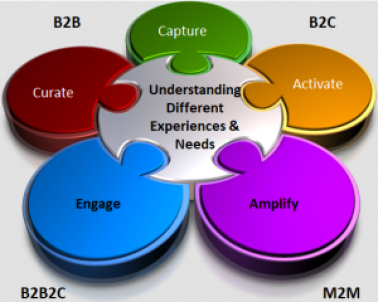 There are significant differences between the ecosystems we might consider. Let’s reflect a little here, some recap and explore some further thoughts.
There are significant differences between the ecosystems we might consider. Let’s reflect a little here, some recap and explore some further thoughts.
They all have complexity, they all need highly collaborative platforms to exchange and build through, they all need constant focus on aligning individual ecosystem players needs with the vision and prospective rewards this can bring to all participating parties.
The more engagement with the final ‘consumer’ throughout the process of insight, discovery to solution building, to eventual proposition outcomes needs the highest ‘active’ attention and communicating for all involved.
 Our experiences determine to a large degree, success or failure. When you are reliant on others to collaborate and exchange knowledge, for the better good, you need to make sure there is a consistent validation process.
Our experiences determine to a large degree, success or failure. When you are reliant on others to collaborate and exchange knowledge, for the better good, you need to make sure there is a consistent validation process. Jeffrey wrote a recent post “
Jeffrey wrote a recent post “